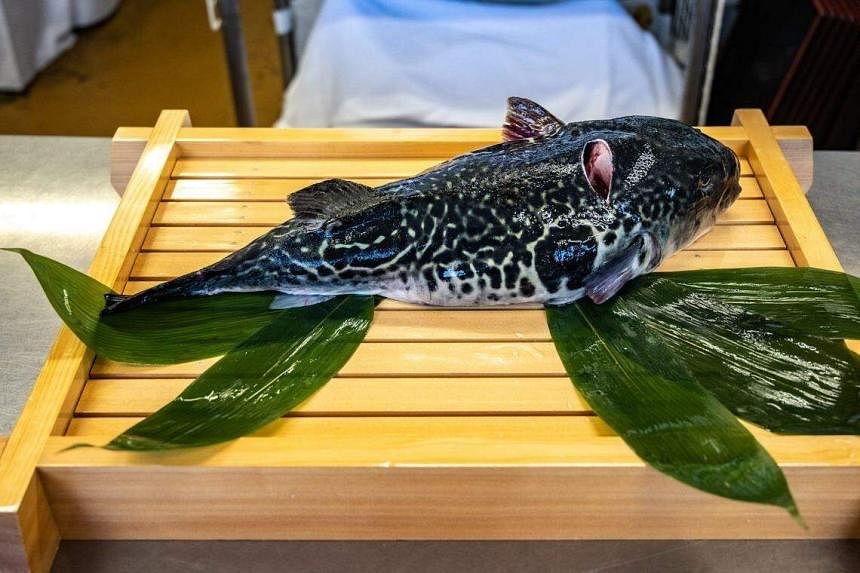PETALING JAYA – Numbness in the face and mouth as well as difficulties in breathing are among the effects of consuming deadly toxins found in the puffer fish.
Until today, there is no anti-toxin that can treat poisoning caused by the potentially deadly puffer fish, experts say.
Despite that, the fish – which is known locally as ikan buntal – is still a delicacy among select groups in Malaysia.
According to the Fisheries Department, a total of 1,337 tonnes of puffer fish were caught in 2020.
“Consumers who bought filleted puffer fish online must also be aware of the species, as most puffer fish varieties are poisonous,” the department said in a statement on Wednesday.
“Under the Food Act 1983, sellers who are found to be selling food that is harmful to humans can be fined or jailed.”
Department of Fisheries director-general Adnan Hussain said that the public should avoid consuming unknown species of puffer fish.
The 83-year-old woman in Johor who lost her life after consuming puffer fish, and her husband, who was reportedly still in the intensive care unit, actually had no idea they were eating something that contained deadly toxins.
Their daughter Ng Ai Lee, 51, said her 84-year-old father purchased the fish unknowingly from a fishmonger last Saturday as there were not much offerings remaining.
Despite having never heard of puffer fish, or “drumstick fish” as it is known in Chinese, her father proceeded to buy it from the fishmonger, who visits their village in Kluang weekly in a van.
“My parents have been buying fish from the same fishmonger for many years, so my father did not think twice about it.
“He would not have knowingly bought something so deadly to eat and put their lives in danger,” Ms Ng told The Star.
In Japan, where the fish is known as fugu, puffer fish handlers must be trained and certified by the government.
Fugu is often served raw after removing the poisonous parts of the fish.
Relating his experience during a trip to Japan, e-commerce manager Evan Wong, 33, said he thought it would be an interesting and once-in-a-lifetime experience.
“I was at a market there and saw the dish on sale. After circling around the market several times, I decided to try it.
“After the first three bites, my face went numb, which scared me.
“Finishing the fish also left me feeling numb for about five minutes before things returned to normal,” he said, adding that the experience also left him with shortness of breath.
In eastern Malaysian state Sarawak, there was even a festival in Betong called Pesta Ikan Buntal dedicated to the fish.
The villagers there would seek the puffer fish for its tasty flesh, cooked in curry or spicy tamarind sauce, grilled or fried.
Meanwhile, in Sabah – especially among the Bajau and Suluk ethnicities – there is a dish known locally as “sagol” or “sinagol”, which commonly consists of puffer fish meat and liver cooked in spices and turmeric.
A cook in a village in Semporna, Sabah, known as Norisa, said she would ensure that only specific non-poisonous puffer fish was selected for the dish.
“We ensure that we use thorny puffer fish, which is usually non-poisonous,” she said.
Universiti Malaysia Terengganu vice-chancellor Mazlan Abd Ghaffar backed this up by saying that not all species of puffer fish are poisonous.
The most common species in Malaysian waters, he said, is the Lagocephalus lunaris (green puffer fish), which is noted for its bright yellow tail.
“Most poisonous species contain a kind of neurotoxin known as tetrodotoxin, found in the muscles and internal organs of the puffer fish, as well as the skin.
“However, puffer fish species with spiny skin... widely sold in Sabah and the Philippines markets are said to be non-poisonous,” the marine scientist specialising in fish, fisheries and the marine environment told The Star.
Professor Mustafa Ali Mohd from the Academy of Sciences Malaysia said that tetrodotoxin is commonly found in the liver, ovaries, skin and muscles of the puffer fish.
The toxin acts as a sodium blocker that inhibits minerals mobility through the cell membrane, which then leads to muscle paralysis.
“The poisoned victim may be conscious but will experience difficulty in breathing and eventually may die due to suffocation or asphyxia.
“The victim may feel tingling, numbness or paresthesia, especially in the mouth and arms,” he said.
Prof Mustafa said the victim might be able to survive the poisoning if early treatment was given. THE STAR/ASIA NEWS NETWORK

